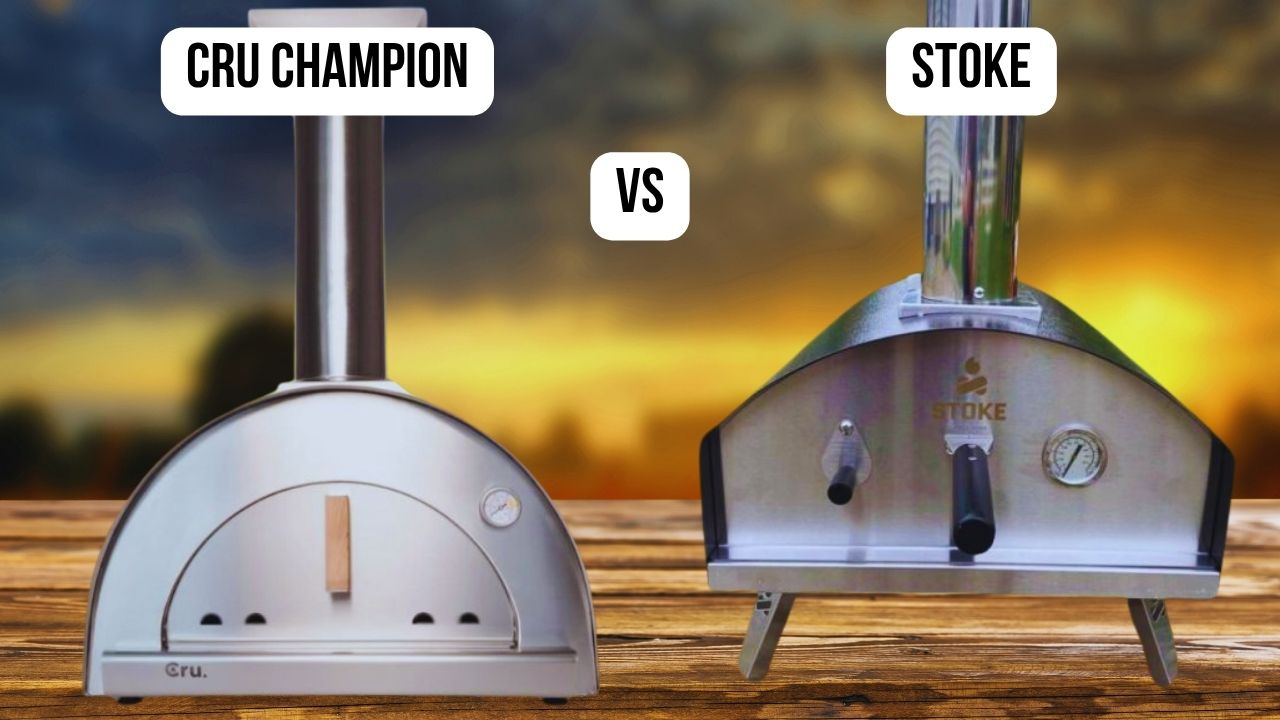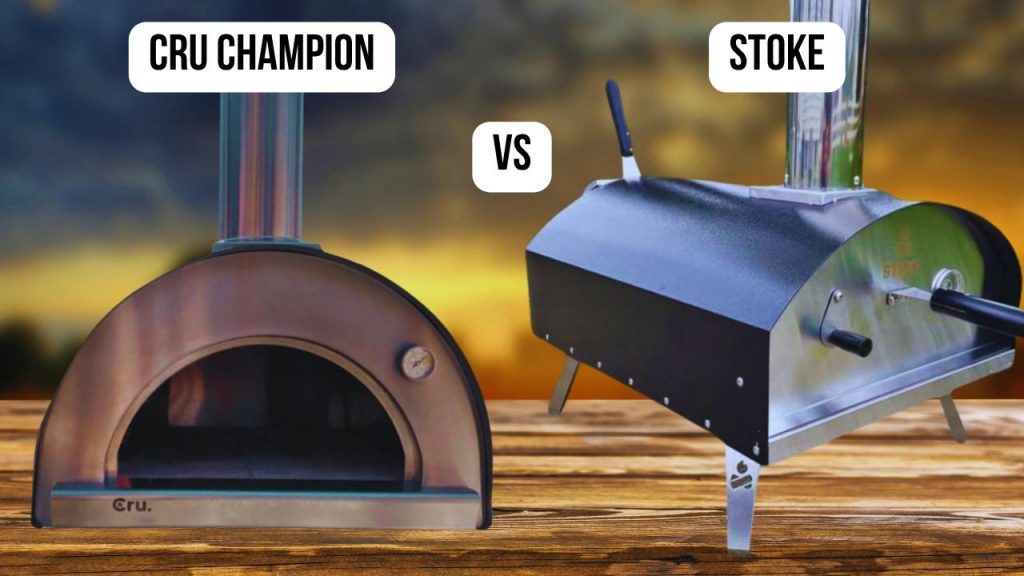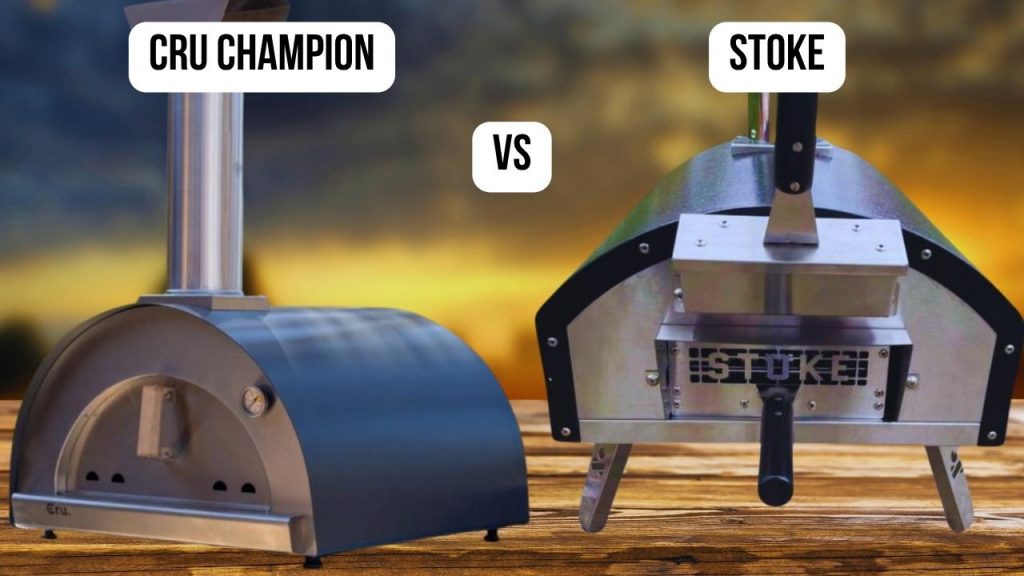As a restaurant chef with over 10 years of experience at Dequte Restaurant LironBoylston, I’ve worked with many different pizza ovens in real cooking conditions. In this article, I’ll compare two ovens I’ve personally used side-by-side in my kitchen: the Cru Champion and the Stoke Pizza Oven. I evaluated both using my standard process, focusing on the most important aspects: quality and materials, temperature control, shape, first-time usage impressions, power source, size, ease of cleaning, and I also conducted a real pizza cooking test to see how long it takes and what kind of results each oven delivers. (You can check out my separate article for a full breakdown of how I test pizza ovens.)
The Cru Champion is a heavy-duty wood- and charcoal-fired oven handcrafted in Portugal, designed for serious outdoor cooking with excellent heat retention and a large cooking surface.
The Stoke Pizza Oven is a gas-powered oven made for quick, easy pizza nights—compact, portable, and built for backyard convenience at a budget-friendly price.
This article features a thorough comparison between the Cru Champion and the Stoke Pizza Oven based on my personal tests.
This article contains referral links. If you decide to buy through them, I may earn a small commission—at no cost to you. That support helps keep this blog alive so I can continue testing pizza ovens and sharing honest reviews.
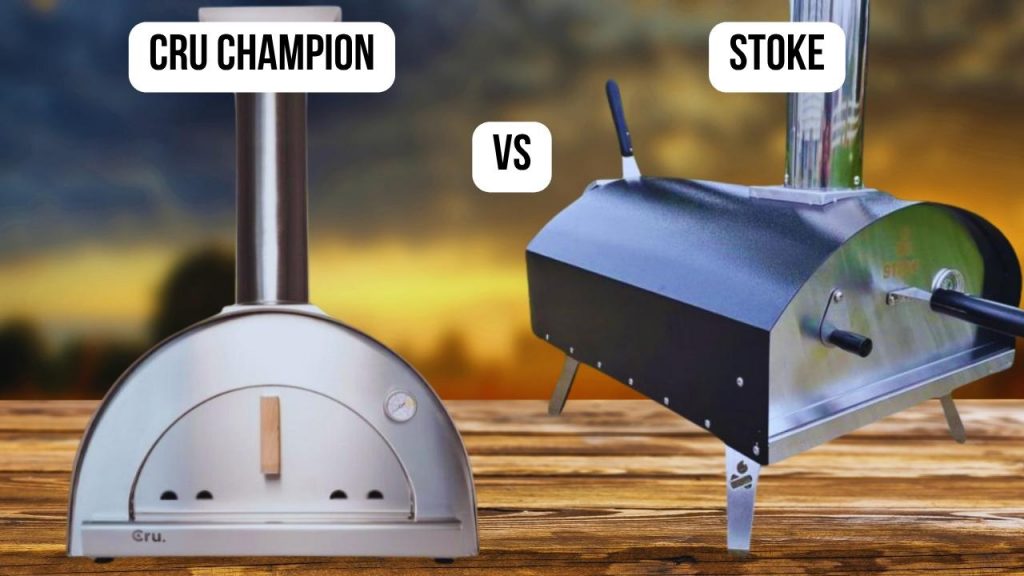
Cru Champion VS Stoke: Quality and Materials
| The Cru Champion is crafted in Portugal using AISI304 stainless steel and thick ceramic stone, offering heirloom-grade durability and insulation. It feels premium in every detail, from the dome to the firebricks. |
The Stoke Wood-Fired Pizza Oven uses average-grade materials. While functional, it doesn’t match the craftsmanship of the Cru Champion. Paint discoloration and potential rust have been noted by some users.
|
Cru Champion VS Stoke: Temperature Control
| The Cru Champion Pizza Oven reaches up to 950°F and retains heat impressively well, especially with wood or charcoal. Its thick dome and multi-layer stone help maintain consistent temperature throughout cooking. |
The Stoke Pizza Oven advertises up to 900°F but during our test only reached around 700°F. It was harder to sustain high temperatures, especially outdoors in varying conditions.
|
Cru Champion VS Stoke: Shape
| The semi-round dome of the Cru Champion is built for airflow and maximum heat circulation. Its tall opening accommodates large pizzas and roasts. |
The Stoke Pizza Oven has a simpler structure with a barrier between flame and stone, which hinders heat exposure and can limit efficiency.
|
Cru Champion VS Stoke: First-Time Usage Impressions
| Unboxing the Cru Champion Pizza Oven felt like opening a professional-grade tool. Setup was straightforward, and everything fit securely. First cook went smoothly with fast results. |
The Stoke Oven assembled quickly in about 10 minutes, which is convenient. However, my first cook was underwhelming — the pizza lacked crispness and took longer than expected.
|
Cru Champion VS Stoke: Power Source
| The Cru Champion gives you flexibility with both wood and charcoal. This lets you fine-tune flavor and heat output, and it supports traditional wood-fired pizza making. |
The Stoke Wood-Fired Pizza Oven is available in both wood and gas models. I tested the wood-fired version, which gives nice flavor but takes longer to manage temperature and fuel.
|
Cru Champion VS Stoke: Size
| The Cru Champion has a massive 24” x 24” cooking area. You can fit two 10-inch pizzas or an 18” pie — ideal for gatherings. The 17.5” front opening allows easy maneuvering. |
The Stoke Pizza Oven is smaller, about 13” wide and just over 40 lbs. It’s portable and decent for smaller meals, but not suited for large batches or big gatherings.
|
Cru Champion VS Stoke: Ease of Cleaning
| Cleaning the Cru Champion is simple: wipe the dome when cool, and clear ashes from the firebricks. It’s built for long-term maintenance without much fuss. |
The Stoke Wood-Fired Pizza Oven also cleans up easily, with removable parts and a simple layout. That said, the materials may not age as gracefully as those in the Cru Champion.
|
Pizza Cooking Test

When it came time to put both ovens through a real-world test, I prepared a classic Margherita pizza using the same dough, sauce, and fresh mozzarella for consistency.
The Cru Champion Pizza Oven heated up impressively fast. Although the brand claims 20 minutes, in my actual use it hit around 850°F in just under 13 minutes — likely helped by using the side wood rack. Once fully preheated, the Margherita pizza was done in just 96 seconds. The crust was beautifully blistered, airy, and had that perfect balance of chew and crisp. The bottom had an even char, and the flavor was everything you’d want from a wood-fired pizza — smoky, rich, and restaurant-quality.
In contrast, the Stoke Wood-Fired Pizza Oven took significantly longer to reach its peak. Despite promotional claims of 900°F in 30 minutes, I only managed to hit about 700°F after 45 minutes using kiln-dried wood. When I slid in the same style of Margherita pizza, it took over 2 minutes to finish cooking. The top cooked well, but the bottom crust was noticeably underdone — lacking that signature crisp bite. The flavor was still good, but the texture didn’t match what I got from the Cru Champion.
In short, the Cru Champion delivered a faster, more even, and tastier result, especially for pizza lovers chasing that authentic Neapolitan-style finish.
How We Tested
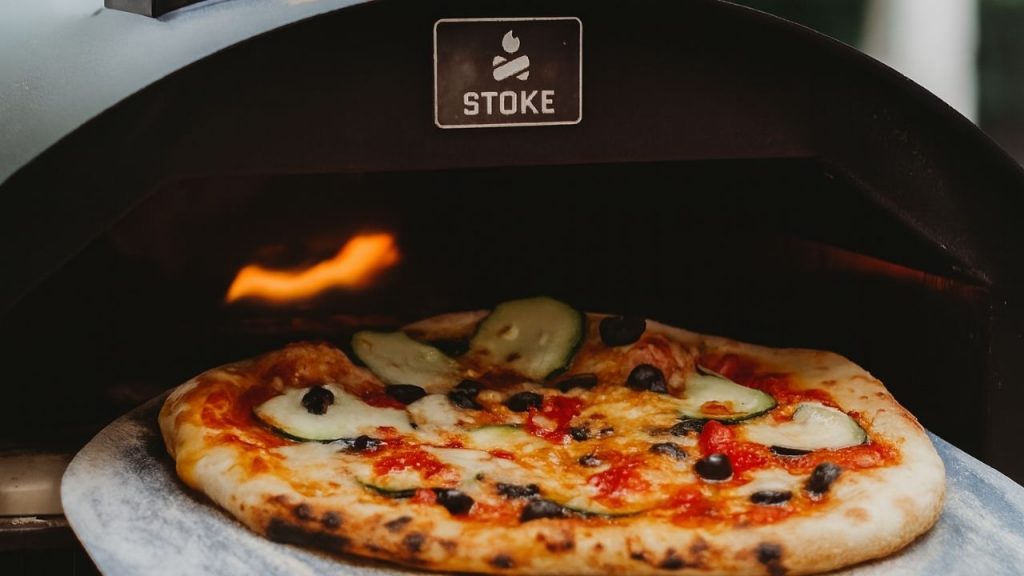
To fairly evaluate the Cru Champion and Stoke Wood-Fired Pizza Oven, I used both ovens in the same outdoor environment, on the same day, with identical ingredients and tools. As a restaurant chef with over a decade of experience at Dequte Restaurant LironBoylston, I’ve tested many pizza ovens before — and I apply the same method each time.
For both ovens, I timed the preheat phase using a laser thermometer to measure the temperature of the pizza stone. I waited until each stone reached at least 650°F before cooking began. I used the same homemade Margherita pizza recipe for consistency: a 60% hydration dough, San Marzano-style tomato sauce, fresh mozzarella, and a few basil leaves.
Each pizza was cooked directly on the stone, without rotating unless absolutely necessary, to test natural heat distribution and retention. I tracked cooking times with a stopwatch and recorded crust texture, top melting, and evenness of cook. I also noted how each oven handled multiple back-to-back bakes.
This hands-on comparison helped me assess the quality, performance, and consistency of the Cru Champion and Stoke under real cooking conditions — not just manufacturer claims.
Conclusion
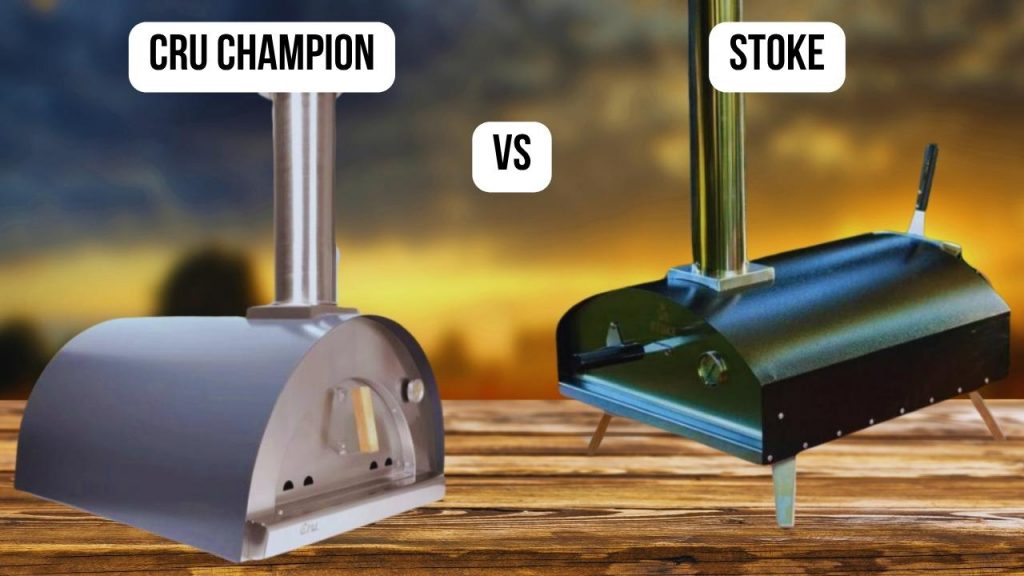
At the end of the day, it’s your choice whether the Cru Champion or the Stoke Wood-Fired Pizza Oven fits your needs better. Both ovens have their strengths, but if you’re looking for superior build quality, better heat retention, and faster, more consistent pizza results — the Cru Champion is my personal favorite.
If you decide to buy one, I’d really appreciate it if you used my referral links. I’ll earn a small commission at no extra cost to you, which helps keep my blog alive and supports the work I put into testing and sharing these reviews.
Don’t skip the list of today’s best pizza ovens.

